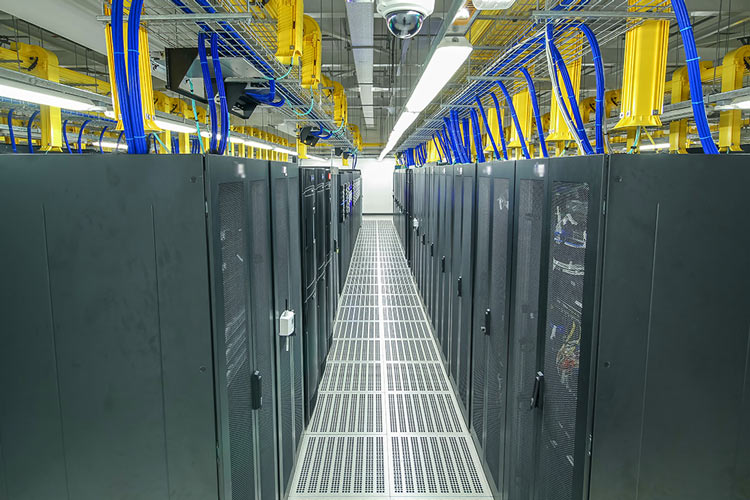In the past few years, “latency” has advanced into the honorable status of a swear word. Without exaggeration, several in-game chats have labeled “lag” or “laggy” as swear words (among many other seemingly innocent words), creating even more “lag” in understanding the already heavily censored communication.
But gaming is not the only field where network latency is unwanted: if latency becomes too high, performance drops, leading to websites taking way too long to load, inferior call quality, and generally affecting user experience across all kinds of applications, in a very frustrating way. The effects of network latency are felt strongest with payment processing, gaming, and other real-time or mission-critical applications, but it can be just as annoying in less critical applications, as well.
This blog will be dedicated to network latency: defining what it is, its common causes, and what businesses can do to identify the root issues and find a solution to secure peak performance and positive customer experience.
What’s Network Latency?
Network latency is any kind of delay experienced when using a network. It is quantified from low to high according to the time it takes for data packets to travel from A to B. Latency is measured by specifying the round trip time (RTT) to the destination and back of a data packet.
Any latency is bad, however, up to a certain degree, it can be tolerable. But where does it start to become too much?
Let’s consider zero latency as perfect and associated with the most positive user experience. Taking zero as a base, a 30-40 ms network latency is still ok, as it doesn’t affect performance much. A 100-150ms latency is still considered acceptable sometimes, but anything higher than that noticeably affects performance and user experience. Note, though, that the application is very important in defining what’s too much. In cases where ultra-low latency is a must, even a 10 ms latency can be felt.
When network latency is high, it can make webpage loading times excruciatingly slow and make it impossible to use applications properly due to frequent interruptions and drops in quality.

What’s at the Root of Network Latency Issues?
To find out what causes network latency, we have to dig a little. The causes can vary from the seemingly obvious to less straightforward ones.
Physical Distance
Since the time it takes for data to travel from A to B determines network latency, its biggest enemy is physical distance. The further apart devices and servers are from each other in space, the bigger the delay can be. Because of this, it’s much easier to achieve low latency when a vast geographical distance doesn’t separate the source and the destination.
For global organizations, establishing edge data centers at different strategic locations around the world is crucial. Routing traffic through different data center locations instead of a central one makes it possible to cut down delays and serve a bigger pool of customers without lags. In cases when extremely low network latency is vital, like with self-driving cars, for instance, edge computing technology is implemented to process the data as close to its source as possible.
Cable and Connection Quality
In order to travel without delay, data needs to move fast. Cable and wireless connection quality can influence the speed of transmission, and the materials from which cables are made also affect speed. Because of this, fiber optic cabling is preferable for low latency. Copper cabling and wireless networks are slower and can negatively impact transmission speeds.
Routers and Switches
Network latency is affected by the number of routers and switches data has to pass through on the path to its destination. Each router or switch constitutes a small “hop” of latency. The more network hardware the data has to pass through, the higher the latency that cumulates in the process.
The quality of hardware is also important for low network latency. Outdated or low-quality routers and switches can cause congestion and queuing by not being able to handle the demand of high volumes of data. This not only slows down network performance but can also become a security concern, as legacy equipment often lacks the necessary protection to filter out threats, jeopardizing the entire network.
Hosting Type
Because multi-tenancy environments work with shared resources, resource contention can become a source of latency. On the other hand, VPSs, dedicated hosting options, or bare metal servers guarantee resources, keeping the noisy and high-resource-consuming-neighbor problem out of the way.
Webpage Complexity
Content hosted on a website can also influence network latency. The design, the size of images, video, and any content that adds to the complexity of the webpage also adds to the time it takes to load. For a positive user experience, it’s crucial to optimize the webpage so that it loads more easily.

Solutions for Reducing Network Latency
Now that we have the main causes, let’s look at some solutions and fixes to decrease latency, minimize lags, and improve network performance.
Implement a CDN
A Content Delivery Network (CDN) brings the content closer to the user, and since distance is the main enemy of latency, using a CDN can be useful. Instead of relying on a single, centralized server, a CDN distributes data across a network of strategically located servers worldwide. When a user requests content, it is delivered from the server closest to their location, reducing travel distance. This minimizes delays caused by long transmission routes, high server loads, or network congestion. CDNs use optimized routing and caching techniques, which speed up content delivery, improving load times, streaming, and, ultimately, customer experience.
Replace Old Infrastructure
Upgrading network infrastructure is also a good idea for improving network latency. Outdated equipment like routers and switches, as well as poor cabling, can create bottlenecks, slow down data transmission, and cause delays. Modern routers and switches are built to process data faster and support features like Quality of Service (QoS) and intelligent traffic routing, which can greatly improve performance. Upgrading to high-speed fiber optic cables and increasing bandwidth ensures data travels quickly and efficiently, even during peak times. These improvements to physical equipment create a more responsive, low-latency network.
Use Network Compression
Network compression can reduce latency by reducing the size of packets before transmission. Compressed data requires less bandwidth, and smaller packets can travel more easily and quickly through the network. Compression is especially effective in the case of large files and multimedia content. This method reduces congestion and improves latency without needing significant upgrades.
Divide With Subnetting
Subnetting divides a network into smaller networks called “subnetworks” or “subnets” using IP address ranges. By localizing traffic within these subnets, data packets travel shorter distances. This helps with congestion and routing delays. The isolation prevents the overloading of the network. Subnetting is efficient in various situations.
Edge Computing
As mentioned earlier in this article, edge computing can minimize network latency by processing data closer to its source. Instead of sending all data to a central server for processing, edge devices like local servers and gateways can handle tasks near the end user. This cuts down transmission delays, making edge computing the go-to solution for time-sensitive applications like IoT, gaming, or video streaming.
Conclusion
Tackling network latency is all about helping data get from point A to point B as quickly and easily as possible. Whether it’s through implementing tools like CDNs, improving infrastructure, or implementing edge computing, reducing delays makes a huge difference. In a world where speed is everything, and latency is a swear word, cutting down delay times is key to keeping your network running fast and your users happy.
Learn more about networks and latency, or find a solution to improve your transmission speeds by contacting Volico Data Centers today.
Call (305) 735-8098 or message us in chat.








